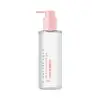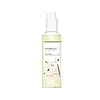What's inside
What's inside
 Key Ingredients
Key Ingredients

 Benefits
Benefits

 Concerns
Concerns

No concerns
 Ingredients Side-by-side
Ingredients Side-by-side

Cetyl Ethylhexanoate
EmollientSorbeth-30 Tetraoleate
EmulsifyingCaprylic/Capric Triglyceride
MaskingHelianthus Annuus Seed Oil
EmollientOryza Sativa Bran Oil
EmollientLactobacillus/Soymilk Ferment Filtrate
Skin ConditioningCapryloyl Salicylic Acid
ExfoliatingSaccharomyces/Rice Ferment Filtrate
Skin ConditioningSaponaria Officinalis Leaf Extract
AntimicrobialTocopherol
AntioxidantButylene Glycol
HumectantPentylene Glycol
Skin ConditioningWater
Skin ConditioningCaprylyl Glycol
Emollient1,2-Hexanediol
Skin ConditioningCetyl Ethylhexanoate, Sorbeth-30 Tetraoleate, Caprylic/Capric Triglyceride, Helianthus Annuus Seed Oil, Oryza Sativa Bran Oil, Lactobacillus/Soymilk Ferment Filtrate, Capryloyl Salicylic Acid, Saccharomyces/Rice Ferment Filtrate, Saponaria Officinalis Leaf Extract, Tocopherol, Butylene Glycol, Pentylene Glycol, Water, Caprylyl Glycol, 1,2-Hexanediol
Helianthus Annuus Seed Oil
EmollientCaprylic/Capric Triglyceride
MaskingSorbeth-30 Tetraoleate
EmulsifyingLimnanthes Alba Seed Oil
Skin ConditioningGlycine Max Oil
EmollientSqualane
EmollientCeramide NP
Skin ConditioningPhytosphingosine
Skin ConditioningHydrogenated Lecithin
EmulsifyingGlycerin
HumectantAnthemis Nobilis Flower Oil
MaskingOlea Europaea Fruit Oil
MaskingCaprylyl Glycol
EmollientEthylhexylglycerin
Skin ConditioningEthylhexyl Palmitate
EmollientCapryloyl Salicylic Acid
ExfoliatingRosmarinus Officinalis Leaf Oil
MaskingCymbopogon Martini Oil
MaskingCitrus Aurantium Bergamia Fruit Oil
MaskingTocopherol
AntioxidantLimonene
PerfumingLinalool
PerfumingGeraniol
PerfumingHelianthus Annuus Seed Oil, Caprylic/Capric Triglyceride, Sorbeth-30 Tetraoleate, Limnanthes Alba Seed Oil, Glycine Max Oil, Squalane, Ceramide NP, Phytosphingosine, Hydrogenated Lecithin, Glycerin, Anthemis Nobilis Flower Oil, Olea Europaea Fruit Oil, Caprylyl Glycol, Ethylhexylglycerin, Ethylhexyl Palmitate, Capryloyl Salicylic Acid, Rosmarinus Officinalis Leaf Oil, Cymbopogon Martini Oil, Citrus Aurantium Bergamia Fruit Oil, Tocopherol, Limonene, Linalool, Geraniol
 Reviews
Reviews

Ingredients Explained
These ingredients are found in both products.
Ingredients higher up in an ingredient list are typically present in a larger amount.
This ingredient is an emollient, solvent, and texture enhancer. It is considered a skin-softener by helping the skin prevent moisture loss.
It helps thicken a product's formula and makes it easier to spread by dissolving clumping compounds.
Caprylic Triglyceride is made by combining glycerin with coconut oil, forming a clear liquid.
While there is an assumption Caprylic Triglyceride can clog pores due to it being derived from coconut oil, there is no research supporting this.
Learn more about Caprylic/Capric TriglycerideCapryloyl Salicylic Acid comes from salicylic acid, the famous acne-fighting BHA.
It usually goes by a more common name of LHA, or lipohydroxy acid.
Like salicylic acid, this ingredient is a chemical exfoliant that can help break down the oil in your pores and reduce inflammation.
Though studies for LHA do show it to be less effective than salicylic acid. To be fair, salicylic acid is the reigning monarch of acne treatments.
However, a study from 2009 found LHA to be comparable to BPO, making it a good alternative for people with sensitive skin. Another study of 14 patients found a significant decrease in comedones after using LHA.
Another pro of LHA? It is less irritating than salicylic acid due to its large molecule size.
Large molecules cannot penetrate skin as well, so they are gentler on the skin. LHA is much less penetrative than salicylic acid.
An in-vitro study (not done on a living organism) found only 6% of LHA penetrated past the statum corneum compared to 58% of salicylic acid. An in-vivo (done on a living organism) analysis revealed ~17% of LHA was still present in the top layer of skin after 4 days, versus ~9% of salicylic acid.
Interestingly, a study from 2008 found LHA comparable to another famous acid, glycolic acid.
This study found about 10% of LHA is as effective as 20-50% of glycolic acid in treating hyperpigmentation and fine-lines.
Hydroxy acids have been found to stimulate skin protein, lipids, and thermal thickening. This may have anti-aging benefits.
Learn more about Capryloyl Salicylic AcidCaprylyl Glycol is a humectant and emollient, meaning it attracts and preserves moisture.
It is a common ingredient in many products, especially those designed to hydrate skin. The primary benefits are retaining moisture, skin softening, and promoting a healthy skin barrier.
Though Caprylyl Glycol is an alcohol derived from fatty acids, it is not the kind that can dry out skin.
This ingredient is also used as a preservative to extend the life of products. It has slight antimicrobial properties.
Learn more about Caprylyl GlycolHelianthus Annuus Seed Oil is the oil derived from the seeds of a Sunflower. Sunflower seed oil is non-fragrant. It is an emollient, meaning it helps to soften the skin.
Sunflower seed oil contains many fatty acids. The fatty acids found in sunflower seeds include (from highest amount to least): linoleic acid, myristic acid, palmitic acid, stearic acid, arachidic acid, oleic acid, and linolenic acid.
These fatty acids help the skin create ceramides. Ceramides play a role in repairing the skin barrier.
Helianthus Annuus Seed Oil helps moisturize the skin. This in turn helps the skin look more rejuvenated and smoother.
Sunflowers are rich in vitamin E.
Historians believe Indigenous cultures of North America domesticated sunflowers before corn. Thus they relied on sunflower oil for a variety of uses. One such use is moisturizing skin and hair.
Sunflower seed oil may not be fungal acne safe. We recommend speaking with a professional if you have any concerns.
Learn more about Helianthus Annuus Seed OilSorbeth-30 Tetraoleate is a surfactant and emulsifier.
This ingredient is a tetraester from oleic acid and polyethylene glycol ether of sorbitol.
As an emulsifier, it helps ingredients such as oil and water mix together. This allows the dirt and oils in your skin to be washed away.
One study found pumpkin oil containing Sorbeth-30 Tetraoleate helped hydrate the skin and did not cause any irritation.
Learn more about Sorbeth-30 TetraoleateTocopherol (also known as Vitamin E) is a common antioxidant used to help protect the skin from free-radicals and strengthen the skin barrier. It's also fat soluble - this means our skin is great at absorbing it.
Vitamin E also helps keep your natural skin lipids healthy. Your lipid skin barrier naturally consists of lipids, ceramides, and fatty acids. Vitamin E offers extra protection for your skin’s lipid barrier, keeping your skin healthy and nourished.
Another benefit is a bit of UV protection. Vitamin E helps reduce the damage caused by UVB rays. (It should not replace your sunscreen). Combining it with Vitamin C can decrease sunburned cells and hyperpigmentation after UV exposure.
You might have noticed Vitamin E + C often paired together. This is because it is great at stabilizing Vitamin C. Using the two together helps increase the effectiveness of both ingredients.
There are often claims that Vitamin E can reduce/prevent scarring, but these claims haven't been confirmed by scientific research.
Learn more about Tocopherol